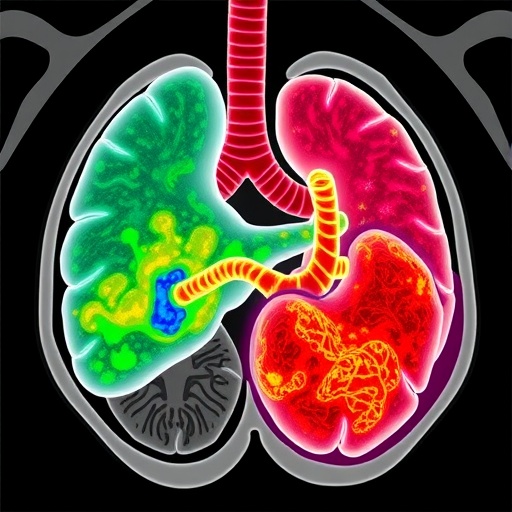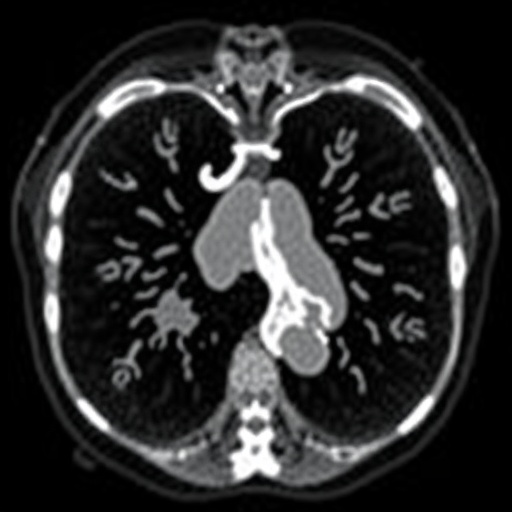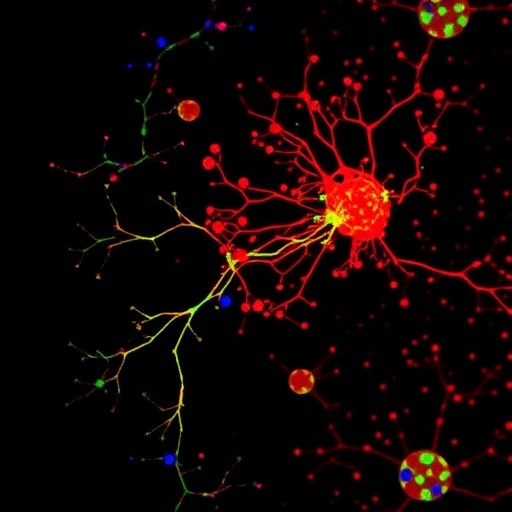
In a groundbreaking advancement bridging oncology and artificial intelligence, researchers have unveiled a cutting-edge machine learning model capable of predicting early liver metastasis in patients undergoing surgery for pancreatic ductal adenocarcinoma (PDAC). This development offers a beacon of hope in the battle against one of the most aggressive and lethal cancer types, where metastasis significantly compromises patient outcomes.
Pancreatic cancer remains notorious for its dismal prognosis, largely due to its aggressive nature and tendency for early metastasis, particularly to the liver. The early detection of liver metastasis is paramount, as it directly influences treatment strategies and survival rates. However, traditional predictive methods often fall short in accuracy, underscoring the urgent need for more sophisticated, data-driven tools that could provide personalized prognosis.
Researchers conducted an expansive retrospective study involving 407 patients who underwent PDAC surgery at the First Affiliated Hospital of Soochow University over nearly a decade, from 2015 to 2023. This large dataset formed the foundation upon which advanced machine learning techniques were applied in an effort to extract predictive patterns invisible to the human eye.
.adsslot_bIkfZK4pPY{width:728px !important;height:90px !important;}
@media(max-width:1199px){ .adsslot_bIkfZK4pPY{width:468px !important;height:60px !important;}
}
@media(max-width:767px){ .adsslot_bIkfZK4pPY{width:320px !important;height:50px !important;}
}
ADVERTISEMENT
To build their predictive engine, the research team employed seven diverse machine learning algorithms, each bringing unique strengths in pattern recognition and data fitting. The dataset was judiciously split, using 284 patients for developing and meticulously tuning the algorithms, while 123 patients formed an internal validation cohort to assess the model’s initial reliability.
Critical to the model’s real-world applicability was external validation. The team sourced data from 131 PDAC patients treated at the Affiliated Hospital of Nantong University, testing the model across independent populations. This crucial step was instrumental in demonstrating the model’s generalizability, a non-negotiable criterion in clinical AI tools destined for diverse healthcare settings.
An impressive 36.1% of the patients developed early liver metastasis within one year post-surgery, highlighting the clinical urgency underlying the study. Among an extensive set of 22 disease characteristics, sophisticated feature selection distilled the dataset to nine pivotal predictors. These parameters encapsulate complex disease dynamics and patient-specific factors, allowing the model to grasp nuances crucial for precise predictions.
Among the machine learning approaches, the XGBoost algorithm stood out, achieving unparalleled performance metrics. Notably, it recorded an Area Under the Receiver Operating Characteristic Curve (AUC) of 0.901, a statistical testament to its ability to discriminate between patients who would or would not develop early liver metastasis. Additional metrics such as accuracy (0.846), sensitivity (0.756), specificity (0.897), and F1 score (0.782) underscore the model’s balanced and robust predictive power.
Calibration, often overlooked in predictive models, was rigorously assessed through the Brier score, which stood at an impressive 0.12—indicative of high reliability in probability estimates provided by the model. In other words, the predicted risks align closely with actual clinical outcomes, an essential feature for any prognostic tool.
The interpretability of machine learning models, frequently criticized as “black boxes,” was addressed by integrating Shapley additive explanations (SHAP). SHAP methodology demystifies the algorithm’s decision-making process, attributing weights to individual features, thus enabling clinicians to understand which factors most significantly influence predictions. This transparency bolsters clinician confidence and supports nuanced treatment planning.
Both internal and external validations substantiated the model’s consistency and robustness, demonstrated through conventional ROC curves as well as calibration and decision curve analyses. Clinical impact curves further illustrated the tangible benefits of model adoption, projecting enhanced decision-making pathways and patient outcomes in routine oncology practice.
Beyond technical sophistication, the research team has translated their AI model into an accessible application platform. This user-friendly tool equips clinicians with dynamic, real-time predictive insights, promoting tailored postoperative surveillance and therapeutic strategies, thereby potentially transforming PDAC management paradigms.
The implications of this research extend beyond immediate clinical utility. It represents a pivotal step towards personalized oncology, where predictive analytics can preempt clinical deterioration, optimize resource allocation, and ultimately contribute to extending survival and quality of life in patients grappling with pancreatic cancer.
As pancreatic cancer incidence shows upward trends worldwide, innovations like this machine learning model reinforce the critical synergy between computational intelligence and clinical acumen. Future research will likely focus on integrating multi-omics data and real-world clinical factors to refine and expand these predictive capabilities.
This study not only exemplifies the promise of AI in oncology but also reflects meticulous methodological rigor, transparent interpretability, and a clear vision for clinical translation. It paves the way for integrating data-driven decision support tools as staples in the complex armamentarium against metastatic pancreatic cancer.
In sum, the intersection of machine learning and surgical oncology heralds a new era of precision medicine. Predictive models like the XGBoost application described here are poised to shift the clinical landscape, enabling proactive interventions that could substantially modify the dismal trajectory of PDAC with early liver metastasis.
The ongoing challenge will be embedding such innovations into routine clinical workflows, ensuring equitable access, and continuously validating model performance amidst evolving cancer care standards. Nonetheless, the horizon looks promising as data science increasingly illuminates pathways to better outcomes in one of medicine’s most formidable battles.
Subject of Research: Predicting early liver metastasis after pancreatic ductal adenocarcinoma surgery using interpretable machine learning models.
Article Title: An interpretable machine learning model for predicting early liver metastasis after pancreatic cancer surgery.
Article References:
Zhu, H., Zhou, Y., Shen, D. et al. An interpretable machine learning model for predicting early liver metastasis after pancreatic cancer surgery. BMC Cancer 25, 1117 (2025). https://doi.org/10.1186/s12885-025-14503-3
Image Credits: Scienmag.com
DOI: https://doi.org/10.1186/s12885-025-14503-3
Tags: advanced predictive models in cancerAI-driven cancer prognosiscutting-edge cancer research techniquesdata-driven approaches in oncologyearly liver metastasis predictionimproving patient outcomes in pancreatic cancerliver metastasis detection toolsmachine learning in oncologypancreatic ductal adenocarcinoma researchpersonalized treatment strategies for cancerpredictive algorithms for liver cancerretrospective study on PDAC





